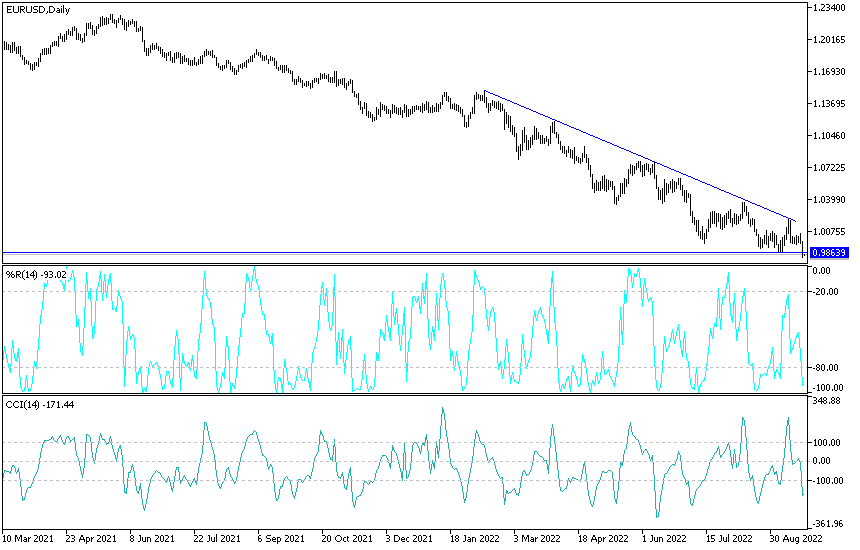The euro price got a new round of downward pressure when news broke of Putin announcing the partial mobilization of Russian forces. This could lead to another round of tensions in the region, which could lead to uncertainty in the entire European region. In addition, the Federal Reserve announced raising interest rates as expected and promised to provide more rate hikes until the rampant US inflation is contained. These factors were enough to push the price of the euro-dollar towards the support level of 0.9812, the lowest in 20 years, and it settles around the level of 0.9840 in the beginning of trading today, Thursday.
Recession Fears Ignored
US central bank officials are determined to stabilize the rate of raising interest rates until US inflation, which reached its highest level in 40 years, is contained. Powell and his team ignored the continuing fears of a recession. The results of the US economic data confirm that Powell is right in his policy, which puts pressure on the rest of the global central banks to speed up raising interest rates as well.
Economic Outlook
Sales of US previously owned homes fell for the seventh consecutive month in August, as rising mortgage rates continued to erode affordability and deal a major blow to the housing market. Figures from the National Association of Realtors showed contract closings fell 0.4% to an annual pace of 4.8 million, the weakest since May 2020. The median estimate in a Bloomberg survey of economists was 4.7 million. Sales were down 17.4% from a year ago on an unadjusted basis.
The streak of declines was the longest since the housing market crash in 2007. Rising financing costs and persistently high home prices frustrated many potential buyers. While weak demand has dampened industry sentiment, economists expect relatively modest declines in home prices amid supply that remains restricted in most regions. The average 30-year fixed-rate mortgage rose to 6.25% last week, the highest rate in nearly 14 years and more than double what it was a year ago, according to the Mortgage Bankers Association.
The higher borrowing costs as Treasury yields rose in the wake of the Federal Reserve's monetary policy tightening aimed at curbing decades-old high inflation.
EUR/USD technical analysis
- EUR/USD has formed lower highs and lower lows inside a falling wedge on the hourly chart, and the pair is currently testing support.
- A breakdown can lead to a drop that is at least as high as the chart formation.
- The wedge extends around 9900 to 1.0600, so the resulting sell-off could continue by 700 pips.
So far the 100 SMA is still below the 200 SMA to confirm that the general trend is still bearish and that support is more likely to break rather than hold. EUR/USD is also moving below both indicators, so these two indicators may continue to hold as dynamic resistance moves forward. The 200 SMA is near the top of the wedge at parity, which may be enough to keep any short-term gains in check. Stochastic is heading down to show that bearish pressure is in effect, but the oscillator is already approaching oversold territory to indicate exhaustion. A return to the upside could mean buyers are taking over, which could lead to a bounce back to nearby resistance levels.
Ready to trade our Forex analysis today? We’ve made a list of the best brokers to trade Forex worth using.

